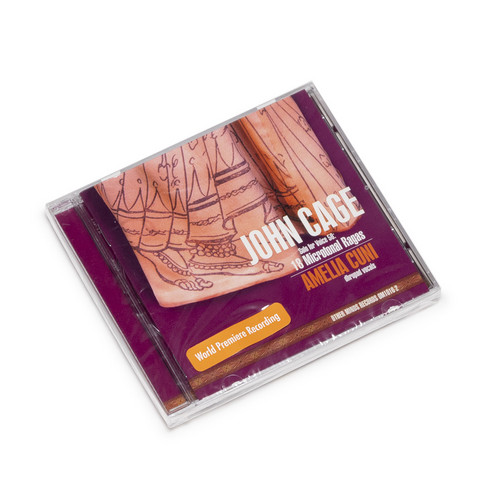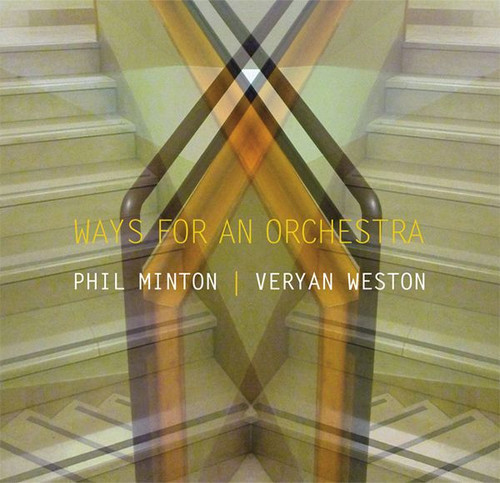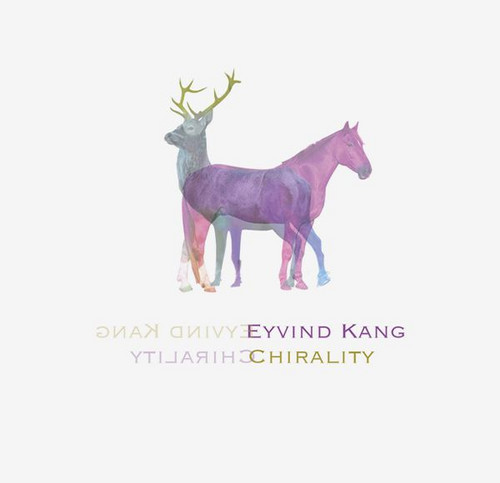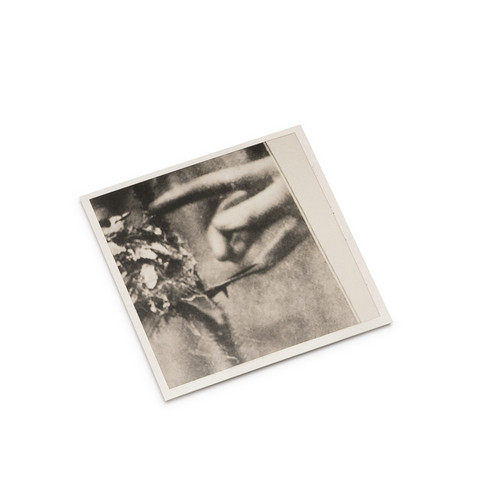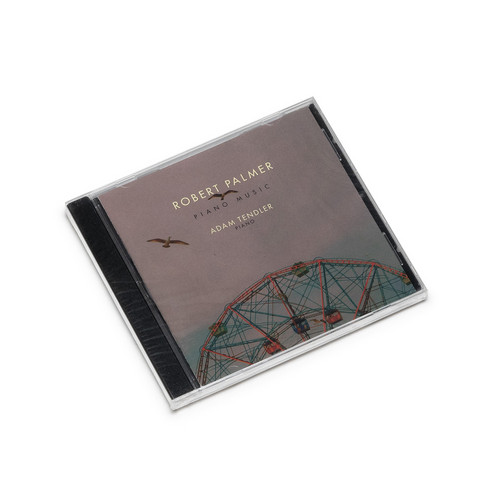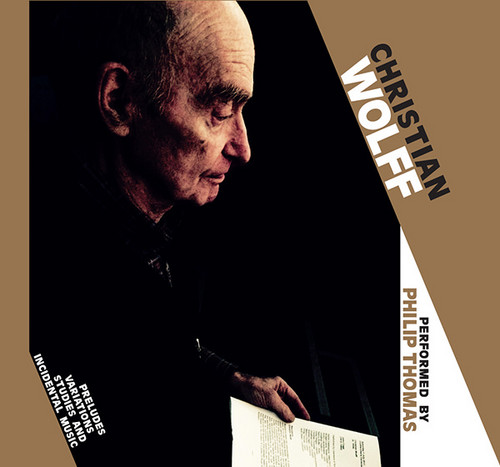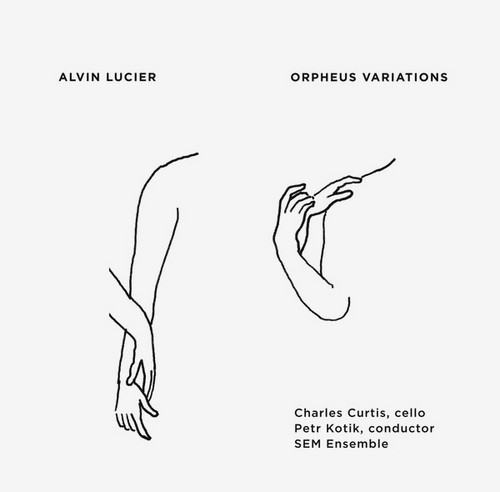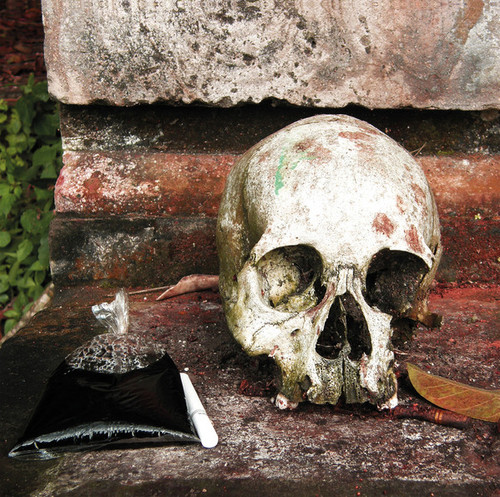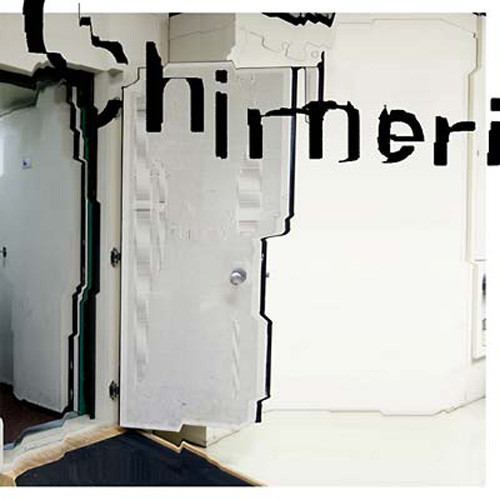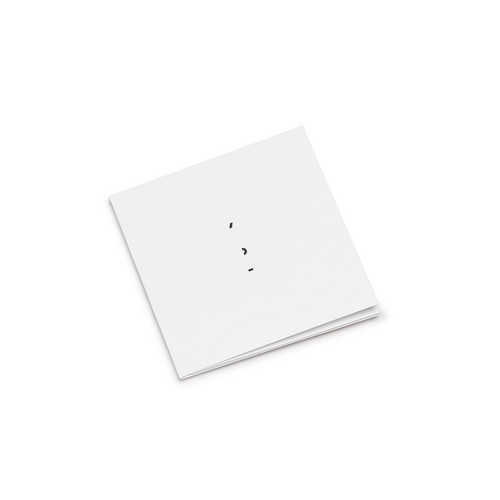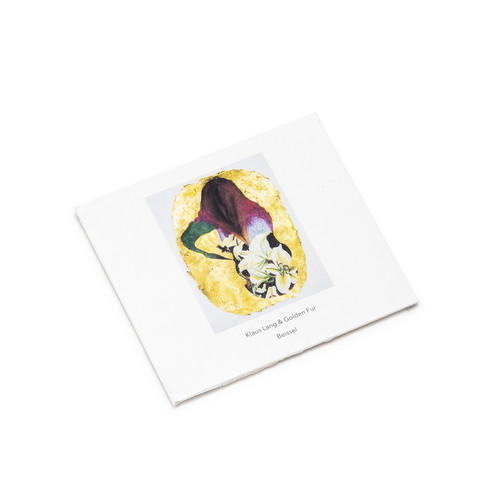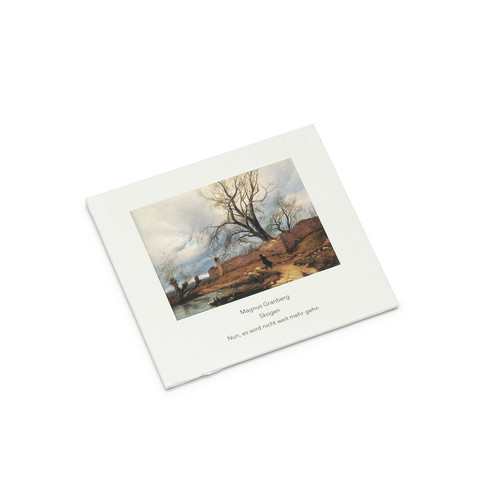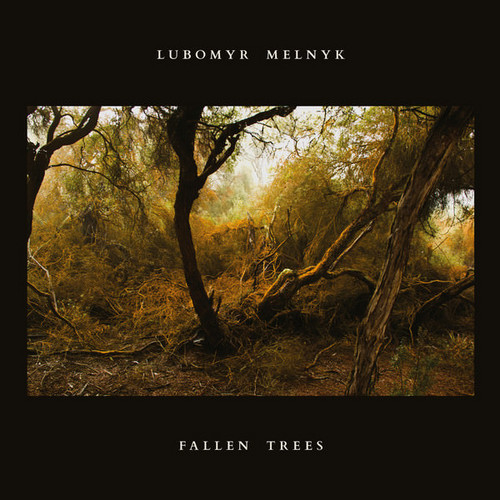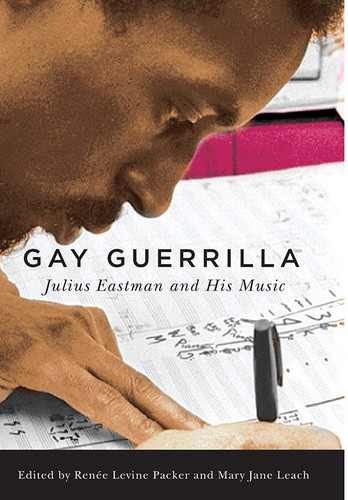Solo for voice 58 : 18 microtonal ragas
**2021 stock** The world premiere recording of Solo for Voice 58 by legendary American avant-garde composer John Cage. Italian-German dhrupad singer Amelia Cuni is the ideal interpreter, trained in classical Indian singing but also able to improvise on ragas in a new music context. Cuni developed from Cage’s score of eighteen raga scales a remarkable and unique interpretation that belongs to both the classical Indian and Western experimental traditions. Includes an extensive booklet with essays …
Ways For an Orchestra
Following three beautiful studio albums, Minton and Weston are back with an outstanding program of orchestral arrangements. The music flows with great pathos through renditions of their own most memorable compositions alongside pieces by Eric Dolphy, Luc Ex, Lindsay Cooper, Jacques Brel and others. Music by Phil Minton, Veryan Weston, Eric Dolphy, Arthur Sullivan, Jerry Leiber, Mike Stoller, Lindsay Cooper, Luc Ex, Jacques Brel
Chirality
The new Eyvind Kang album was recorded in Italy with a 25 piece mixed orchestra of traditional strings and winds, with the addition of Moog synthesizer, accordion, percussion, field recordings and voice. It features vocals by Alan Bishop, co-founder of Sun City Girls. Eyvind Kang conductor, chironomy, violaAlan Bishop voice, field recordingsMarco Dalpane accordion, moog synthesizerMG_INC Orchestra:Ferenc Vojnic Hajduk 1st violin; Eliana de Candia 1st violin; Giulia Camardella 1st violin; Eleonor…
Cul de Sac
**500 copies** After "Mars II" and "Fortune de Mer", the album Frederik made together with Timo Van Luijk, Croene releases "Cul de Sac": a record where he explores the boundaries and limits of the piano. A mind-blowing journey through his soul and his past. After graduating from Conservatories in 1999 Frederik Croene embarked on several projects in which he would reflect on the ever-changing and multi-layered identities of the classical pianist. As the Gestalt of his instrument is grounded in 19…
Deux Songes (Les Jours Sont Faits Pour Expliquer Les Nuits)
** 300 copies** French musician Bruno Duplant is one of the most talked-about artists on the experimental music scene today. In recent years he's presented many outstanding composed pieces and released a succession of excellent recordings on labels around the world. The abundance and vitality of his work are remarkable. On this album, two compositions by Duplant are performed by Ordinary Affects, led by Boston-based musician/composer Morgan Evans-Weiler. Ordinary Affects is an experimental music…
Piano Music
Robert Palmer (1915-2010) produced more than ninety symphonic, choral, chamber, and solo works throughout his career, earning a reputation in the mid-twentieth century as one of the country's leading, most daring, and -- at the same time -- appealing modernists. Palmer's unique musical language combined a deeply emotional impulse with complex counterpoint and rhythmic structures, drawing comparisons to Hindemith, Bartók, Lou Harrison, even Brahms. Aaron Copland famously included Palmer on his 19…
Preludes, Variations, Studies and Incidental Music
These two discs reveal Christian Wolff as a composer fully exploring, in different ways, the continuum between music which is highly fragmented, embracing extended silences [composed or indeterminate], to that which is more progressive and seemingly driven, albeit taking in disarming and unconventional routes. As a body of repertoire, these works are remarkable for their freshness of musical thought and energy (John Cage considered Wolff to be the most 'musical' of the experimental composers).Ch…
Cloud Atlas/Vertical Study
Cloud Atlas is a collection of ten short pieces composed by Toshi Ichiyanagi between 1985 to 1999. Vertical Study gathers rare pieces composed by Claude Ledoux. Both are performed by Japanese pianist Kaoru Tashiro. "Kaoru
produces serene, yet rich sound texture; the fluctuation of beat and
the perspective of the motif are ingenious. I hope many more people will
taste this joy of finding a grain of gold with your own eyes and ears,
from her commercialism-unrelated, sincere and an experimental…
What We Leave Behind: Jean-Luc Godard Archives - Remixes
In a fine tribute to the pivotal events of Mai ’68, Ricardo Villalobos, Jan Jelinek and Petre Inspirescu remix Soundwalk Collective’s collages of archival Jean-Luc Godard material in impressionistic ways for the ‘floor. Across the front, Ricardo V smears the smoky, jazz-wise source material of Death is the Enemy into a bustle of splayed drums and voices with a Gauloises-wisp quality, gradually resolving into a rolling momentum that melts out into a more fractious, psychedelic experience. On th…
Orpheus Variations
Orpheus Variations is a new composition by Alvin Lucier for solo cello and seven wind instruments. It is based on a particular sonority from the first movement of Igor Stravinsky's ballet score, Orpheus; a sonority that has haunted Lucier for decades. Orpheus Variations is one of eight large-scale compositions made expressly for Charles Curtis by Alvin Lucier in the last 15 years. This performance was conducted by Petr Kotik, with Charles Curtis playing solo cello alongside members of the SEM En…
Chamber Music: Alvin Lucier & Morton Feldman
Anthony Burr and Charles Curtis present a collection of curated compositions from Alvin Lucier and Morton Feldman. Two Lucier pieces, "August Moon" and "Trio For Clarinet, Cello & Tuba" are presented here for the first time. Liner notes are excerpted from a lecture on Morton Feldman given by Alvin Lucier. A selection from Alvin Lucier's liner notes: "For Feldman, dynamics serve an acoustical function. When he mitigates a piano attack he reduces that spike of noise that's at the onset of every pi…
The Gamelan of the Walking Warriors
A fascinating immersion in the heart of a funeral ceremony live recorded in Bali, where gongs, cymbals, and drums give rhythm to the bewitching atmosphere of this mortuary procession.The international audience’s interest into Balinese music and its gamelan orchestras dates back to the edition of large ethnographic series in the 1950s, 60s and 70s which largely encouraged the discovery of this music beyond Indonesia’s borders. Taking advantage of a more advanced technology compared to the vinyl g…
Chimerization (English)
English edition-Editions Mego is happy to announce the release of Chimerization, three vinyl editions of a text-sound piece Florian Hecker produced on the occasion of dOCUMENTA (13) in Kassel, Germany. For Chimerization, Hecker invited the Iranian writer and philosopher Reza Negarestani to contribute an experimental libretto, "The Snake, the Goat and the Ladder (A board game for playing chimera)," a script that has been recited by a group of speakers and recorded by Hecker in anechoic and sound-…
Panopticon Specularities
A native of Istanbul, Turgut Erçetin (1983) studied composition and completed his doctorate studies at Stanford University. In 2016, Erçetin was awarded with DAAD Artists-In-Berlin program for a year-long residency in Berlin, and since then he has been based in Berlin. Erçetin's works engage with issues of sound, not as colors but as sonic entities that interface with time and space. Most of his works, therefore, are involved with acoustics and psychoacoustics as well as computer aided compositi…
Fremde Zeit Addendum 5 · Solo V Für Klavier
Jakob Ullman's 5th solo work for piano is atypical for a piano performance, using electronic playback and requiring three assistants sustaining a soundscape to realize a concept of "gravity".
Beissel
Beissel is the fruit of a remarkable alliance between Austrian composer Klaus Lang and the Australian ensemble Golden Fur - Samuel Dunscombe (clarinet), Judith Hamann (cello), and James Rushford (keyboards). Conceived for the distinctive resonance of a church setting, the music deploys organ, winds, and strings in a patient unfolding where the boundaries between composition and collective improvisation gently blur. Lang, celebrated for his quietly radical music, draws inspiration from eccentric …
Nun, Es Wird Nicht Weit Mehr Gehn
Nun, es wird nicht mehr geh’n is a quietly arresting work that places Magnus Granberg at the forefront of contemporary, post-Feldman chamber composition. Written for and performed by Skogen, Granberg’s long-running collaborative ensemble, the album develops over extended durations, favoring a distinctive blend of improvisation and composed materials. Drawing inspiration from literary and musical ancestors - including the haunting lyricism of Olivier Messiaen and the structural clarity of Morton …
Fallen Trees
Cascades of notes, canyons and rivers of sound: there’s something about his music that channels the natural world at its most awe-inspiring. In ‘Fallen Trees’ the connection with the environment continues, taking its cue from a long rail journey Lubomyr Melnyk made through Europe. Glancing out of the window as the train passed through a dark forest, he was struck by the sight of trees that had recently been felled. “They were glorious,”he says. “Even though they’d been killed, they weren’t dead.…
Linien II
The title gives an indication as to what this cycle is about: “Lines” as a catch-all phrase for melodic relationships: differently formed – from a unison melody for two instruments to counterpoints of independent voices; composed in different ways – from “calculated” proportioning to spontaneous writing; expressive in different ways – from lament to competition. If nothing else, these pieces are also a journey through all registers of the clarinet family, from Eb- and Bb clarinet through basset …
Gay Guerrilla: Julius Eastman and His Music
Composer-performer Julius Eastman (1940-90) was an enigma, both comfortable and uncomfortable in the many worlds he inhabited: black, white, gay, straight, classical music, disco, academia, and downtown New York. His music, insistent and straightforward, resists labels and seethes with a tension that resonates with musicians, scholars, and audiences today. Eastman's provocative titles, including Gay Guerrilla, Evil Nigger, Crazy Nigger, and others, assault us with his obsessions. Eastman tested …
